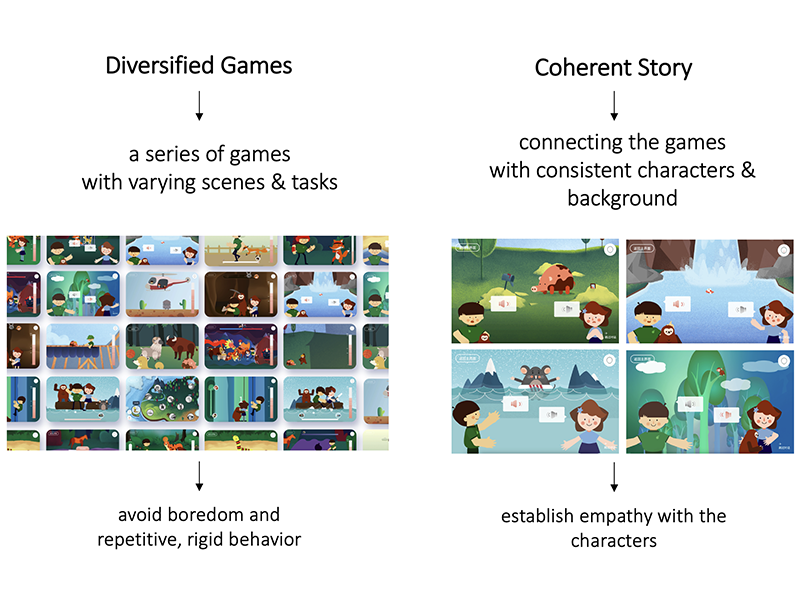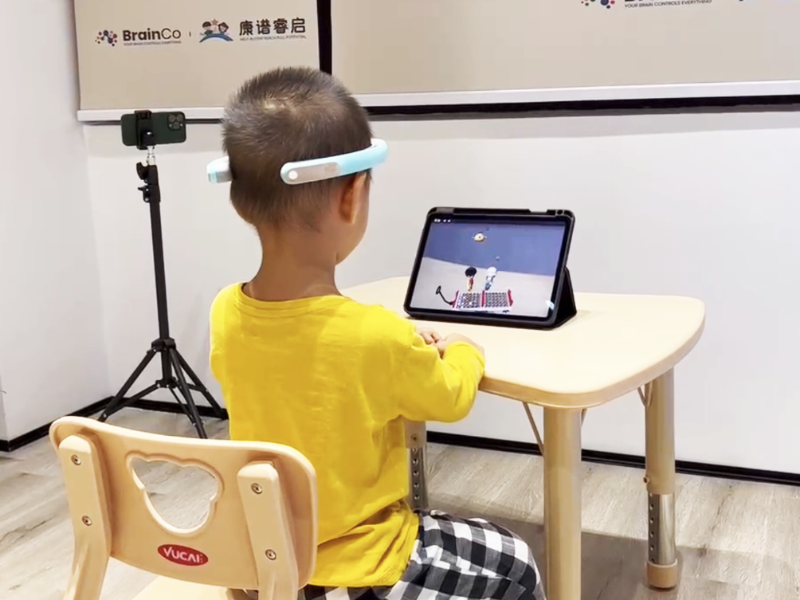August 1, 2020
[By Zhaoyi Yang, Pengcheng An, Jinchen Yang, Samuel Strojny, Zihui Zhang, Dongsheng Sun, and Jian Zhao]
Neurofeedback games are an effective and playful approach to enhance certain social and attentional capabilities in children with autism, which are promising to become widely accessible along with the commercialization of mobile EEG modules. However, little industry-based experiences are shared, regarding how to better design neurofeedback games to fine-tune their playability and user experiences for autistic children.
In this paper, we review the experiences we gained from industry practice, in which a series of mobile EEG neurofeedback games have been developed for preschool autistic children. We briefly describe our design and development in a one-year collaboration with a special education center involving a group of stakeholders: children with autism and their caregivers and parents. We then summarize four concrete implications we learnt concerning the design of game characters, game narratives, as well as gameplay elements, which aim to support future work in creating better neurofeedback games for preschool children with autism.
Related Publications
Zhaoyi Yang, Pengcheng An, Jinchen Yang, Samuel Strojny, Zihui Zhang, Dongsheng Sun, and Jian Zhao. 2021. Designing Mobile EEG Neurofeedback Games for Children with Autism. Adjunct Publication of the 23rd International Conference on Mobile Human-Computer Interaction. Association for Computing Machinery, New York, NY, USA, Article 23, 1–6. https://doi.org/10.1145/3447527.3477522

